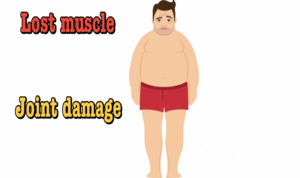Maintaining muscle mass after athletic retirement—or even after peak performance years—can be challenging but entirely achievable with the right strategy. As athletes transition out of competitive training, their routines, goals, and recovery capacities change. However, maintaining strength, mobility, and lean muscle isn’t just about aesthetics—it’s essential for long-term health, metabolic efficiency, and overall vitality.
Muscle Maintenance
 One of the first things retired athletes must recognize is that muscle maintenance requires a new approach. The body no longer benefits from the same hormonal environment or recovery speed as in the prime competitive years. Testosterone and growth hormone levels naturally decline with age, which can make building muscle in your 30s or retaining muscle slightly more difficult. Therefore, training must shift from constant high-intensity performance to smarter, more strategic resistance work. Focused strength training, emphasizing compound movements such as squats, deadlifts, presses, and pull-ups, should form the foundation. These exercises engage multiple muscle groups, preserve functional strength, and stimulate hormonal responses that help maintain muscle mass.
One of the first things retired athletes must recognize is that muscle maintenance requires a new approach. The body no longer benefits from the same hormonal environment or recovery speed as in the prime competitive years. Testosterone and growth hormone levels naturally decline with age, which can make building muscle in your 30s or retaining muscle slightly more difficult. Therefore, training must shift from constant high-intensity performance to smarter, more strategic resistance work. Focused strength training, emphasizing compound movements such as squats, deadlifts, presses, and pull-ups, should form the foundation. These exercises engage multiple muscle groups, preserve functional strength, and stimulate hormonal responses that help maintain muscle mass.
In the 30s, the approach becomes even more crucial. This decade often marks a shift in metabolism and recovery capacity, especially for athletes who may no longer train as intensely or as frequently. The key is consistency over volume. Two to four resistance sessions per week can be enough to maintain and even build muscle when paired with proper nutrition and recovery. Progressive overload—gradually increasing resistance or intensity—is still important, but so is balance. Integrating mobility work, stretching, and active recovery ensures that joints and connective tissues stay healthy, supporting long-term strength without injury.
Nutrition Just As Important As Exercise
 Nutrition plays a vital role in this phase. Protein intake should remain a top priority, ideally spaced throughout the day to maximize muscle protein synthesis. A general target of 1.6–2.2 grams of protein per kilogram of body weight helps maintain lean tissue. Lean meats, eggs, dairy, legumes, and plant-based sources like tofu and lentils are excellent options. Carbohydrates should not be neglected—they provide energy for effective workouts—and healthy fats support hormone balance. Hydration also becomes increasingly important for recovery and performance, even for those no longer competing at elite levels.
Nutrition plays a vital role in this phase. Protein intake should remain a top priority, ideally spaced throughout the day to maximize muscle protein synthesis. A general target of 1.6–2.2 grams of protein per kilogram of body weight helps maintain lean tissue. Lean meats, eggs, dairy, legumes, and plant-based sources like tofu and lentils are excellent options. Carbohydrates should not be neglected—they provide energy for effective workouts—and healthy fats support hormone balance. Hydration also becomes increasingly important for recovery and performance, even for those no longer competing at elite levels.
A Holistic Approach
Equally important is lifestyle management. Sleep is the unsung hero of muscle maintenance; seven to nine hours per night allows for recovery, hormonal regulation, and tissue repair. Chronic stress, on the other hand, can elevate cortisol, which may contribute to muscle breakdown over time. Retired athletes should consider mindfulness, yoga, or relaxation techniques to keep stress in check and promote overall well-being.
Finally, staying motivated without the structure of competition can be tough, but setting new goals—whether it’s mastering a new lift, improving endurance, or simply maintaining strength into one’s 50s and beyond—can reignite that competitive spirit. Building and maintaining muscle in your 30s and beyond is less about training harder and more about training smarter. With deliberate resistance work, balanced nutrition, quality recovery, and a strong mindset, retired athletes can not only preserve their hard-earned muscle but continue to perform—and feel—their best for decades to come.